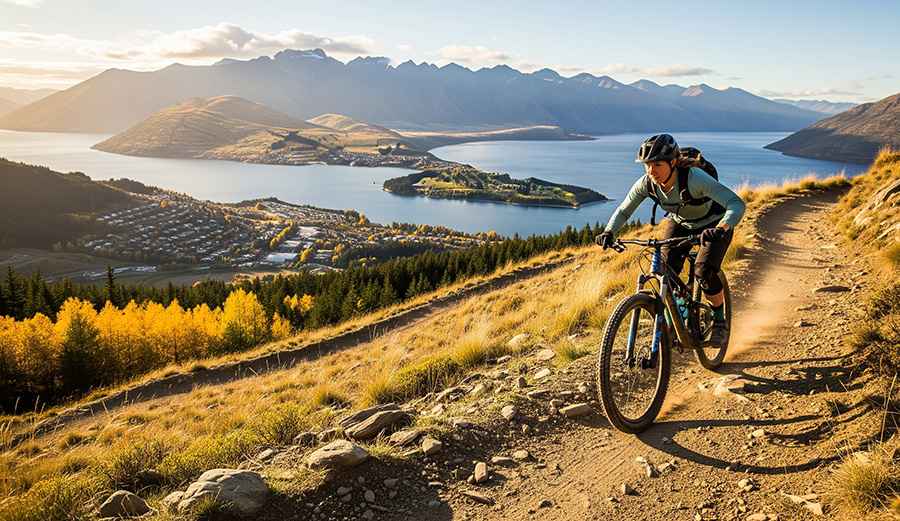A Quick Guide to Choosing the Right Bike Track in Queenstown NZ for Your Skill Level
Queenstown, New Zealand, boast some of the world’s best bike tracks. There’s the history-rich Otago Central Rail Trail, the scenic Lake Hayes Hoop Trail, and the challenging Fernhill Loop. With the town’s ample variety of bike tracks, riders of all levels are welcome to get on their bikes and explore what the routes have to offer.

While each bike track Queenstown offers has its own charm, taking one that matches your ability can make your ride more enjoyable. Just as importantly, it also minimises the risk of fatigue, frustration, or even injury. This guide will walk you through how to choose a track so that you can set off with confidence.
Assess Your Riding Skills
It can be tempting to follow friends onto more advanced routes or assume that enthusiasm alone will carry you through. However, the cycling trails here are as varied as the landscape itself, and a beginner who ventures onto a track designed for experts may find themselves walking more than riding. As such, assessing your own skills gives you the best chance of enjoying the ride rather than just enduring it.
To do this, think about how confident you are with balance, cornering, and braking on different surfaces, particularly over extended periods. Reflecting on your past experiences, such as whether you’ve handled gravel paths, steep climbs, or fast descents, can help you gauge the types of trails you’re ready for.
Know What Makes a Track an Easy, Moderate, or Advanced Trip
Not all trails are created equal. Some trails meander gently along lakesides while others plunge down steep mountainsides. With such a wide spectrum of terrain, it can sometimes be difficult to know whether a track is suited to your ability. Fortunately, New Zealand’s Department of Conservation provides a grading system to help riders understand what to expect before they set out.
An easy track is typically wide, well-maintained, and mostly flat, making it ideal for casual riders and families. Moderate trails may introduce steep slopes, gravel, or narrow paths that require more control and stamina. Advanced routes, on the other hand, are often technically challenging and filled with giant climbs, large drop-offs, and hazards like sharp switchbacks and exposed ridgelines. Understanding these distinctions allows you to match your choice to your comfort zone.
Factor in Distance and Duration
Even an easy ride can become daunting if it stretches on longer than what you’re used to. When choosing a route, think about how long you’re comfortable staying in the saddle and whether you can maintain energy over the course of the journey. You can check official trail guides online or local signage to know the average time it takes to complete a track. This helps you gauge whether the distance is manageable. Also, consider how changes in weather or trail conditions might slow your progress. Taking all these into account ensures that you finish the trail with energy to spare.
Ensure You’re Fit to Handle the Terrain
Demanding climbs, uneven surfaces, and sharp descents place extra strain on your body. Without the right conditioning, these features can quickly turn enjoyable rides into exhausting, potentially dangerous ones. Thus, before committing to a route, ask yourself whether your current condition matches the type of ground you will face.
One way to assess this is by reflecting on how you’ve managed similar terrain in the past. This way, you can recognise whether you’re ready for a more technical challenge or better suited to a gentler route. If you still feel uncertain, don’t push yourself to tackle the most advanced trails straight away. Start with easier tracks that build your stamina and confidence, and then gradually step up to routes with demanding features.
Prepare Before You Set Off
Even when you have chosen a track that suits your skill and fitness, preparation can make or break the experience. A poorly maintained bike, lack of water, or unexpected weather can turn an otherwise manageable trail into a miserable outing. As such, it’s important to prepare thoroughly before heading out.
Firstly, you need to equip yourself with the right gear for the route to stay safe and comfortable. This typically includes a reliable helmet, the right type of bike, appropriate tyres, and enough layers for shifting mountain conditions. Next, bring enough water and snacks for the journey, as well as a repair kit to help deal with minor setbacks. Finally, take the time to check maps or trail markers in advance so you know what to expect and avoid getting caught off guard by surprise detours.
Respect the Trail and Reap the Rewards
Riding through Queenstown’s tracks is a great way to test your limits while taking in New Zealand’s breathtaking landscape. However, choosing a trail that doesn’t match your ability can quickly turn excitement into exhaustion. With this guide, you’ll have an easier time finding the track that fits you best, allowing you to enjoy the ride without worry and savour every moment along the way.